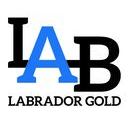SPONSOR: New Age Metals Inc. The company’s Lithium Division has already made significant acquisitions in Canada and the USA. The company also owns one of North America’s largest primary platinum group metals deposit in Sudbury, Canada. Updated NI 43-101 Mineral Resource Estimate 2,867,000 PdEq Measured and Indicated Ounces, with an additional 1,059,000 PdEq Ounces in the Inferred. Learn More.

What role are lithium-ion batteries playing in energy transition?
- Lithium-ion batteries have been essential to the mainstream adoption of electric vehicles as part of a larger energy transition.
- This has led to an unprecedented surge in the market for lithium-ion batteries and an even larger spike in supply. Prices have fallen recently, but demand is expected to continue rising.
- Lithium-ion batteries also have potential applications in utility-scale renewable energy, although they face competition from newly developed technologies in that arena.
The energy transition has encouraged industries to move from fossil fuel to renewable energy sources. In doing so, companies have faced challenges in determining how to store significant amounts of energy for extended periods of time. This need is especially acute in the electric car market, which has turned to lithium batteries for energy storage. Demand for lithium is projected to grow by as much as 20% in 2019 compared to the previous year, according to Chilean producer SQM, largely because of increasing investment in and mainstream adoption of electric vehicles.
More traditional technologies, like internal combustion engines, use energy almost as soon as it is created. Comparatively, electric vehicles need to store electrical energy for long periods of time before using the supplies. Lithium-ion batteries, specifically those using the compound lithium hydroxide, store energy while taking up less space than other battery technologies, and their adoption by the mass market has encouraged innovation in the technologies underpinning the batteries. The impact and success of lithium-ion battery technology and its potential in the global energy transition to renewable energy has been recognized on an outsized scale — the technology’s creators won the Nobel Prize for chemistry in 2019.
Tesla, the electric car manufacturer owned by Elon Musk, has become a major player in the American lithium business. Tesla acquired lithium deposits across the American West while building huge “gigafactories†to mass produce the batteries. The company’s plans call for the first of these factories in Nevada to process 25,000 metric tons of lithium hydroxide per year, and it has a larger footprint than any other building in the country. Electric vehicle sales worldwide surged 75% year over year in the first quarter of 2019, even as the overall global automobile market contracted; regardless of opinions over the energy transition’s evolution, all of these cars need batteries.
Although electric vehicles have been the most significant application of lithium-ion batteries to date in the energy transition, lithium could also make renewable energy sources more viable for utilities. Whereas traditional fossil fuel power plants constantly produce energy, renewables like solar and wind can only produce energy while the sun is shining or the wind is blowing. To ensure that the power grid works constantly, regardless of external variables, transitioning to renewable energy would require the utility-scale use of energy storage. S&P Global Market Intelligence analysis shows that lithium-ion batteries are seen as the technology to compete with in this market.
Potential alternatives to lithium-ion batteries include batteries made from different chemical compounds. Lithium has faced some technological challenges in its adoption at the grand scale necessary for utilities, which resulted in multiple fires in Arizona that led a member of the state’s public utilities commission to call for different technology solutions.
The increasing demand for lithium-ion batteries and the importance they may hold for the transition to renewable energy has sparked geopolitical competition to secure a stable supply of batteries. Chinese firms have invested billions of dollars in lithium deposits across Australia and South America in recent years as part of the country’s plan to quadruple electric vehicle production between 2019 and 2025. In response, European companies have sought to expand their own investments in lithium so that their supply of batteries does not rely on foreign supply chains. Companies investing in European lithium processing have also voiced concerns about the potential environmental impact of processing the lithium into batteries in China and then shipping them across the world for use in Europe. As similar tensions arise between China and the U.S., lithium has become another flash point in the countries’ trade battles.
Market demand has contributed to a surge in the lithium mining and production businesses. Budgets for mining industry lithium exploration grew nearly sevenfold worldwide between 2015 and 2018, according to S&P Global Market Intelligence. The jump in demand for lithium-ion batteries led to a spike in prices in the early 2010s, and acquisitions of lithium deposits and mines rose sharply. Since then, the supply of lithium has risen more quickly than demand, so prices have fallen and deal-making has slowed.
Although lithium prices across autumn 2019 were on the lower side and some projects have been delayed or cut back, many market participants still expect the sector to grow significantly. Lithium production is expected to triple to 1.5 million metric tons worldwide by 2025. S&P Global Platts has reported on fears that even this increase in supply might not be enough to keep up with demand, especially if expected electric vehicle adoption rates continue.
Source: https://www.spglobal.com/en/research-insights/articles/what-role-are-lithium-ion-batteries-playing-in-energy-transition












